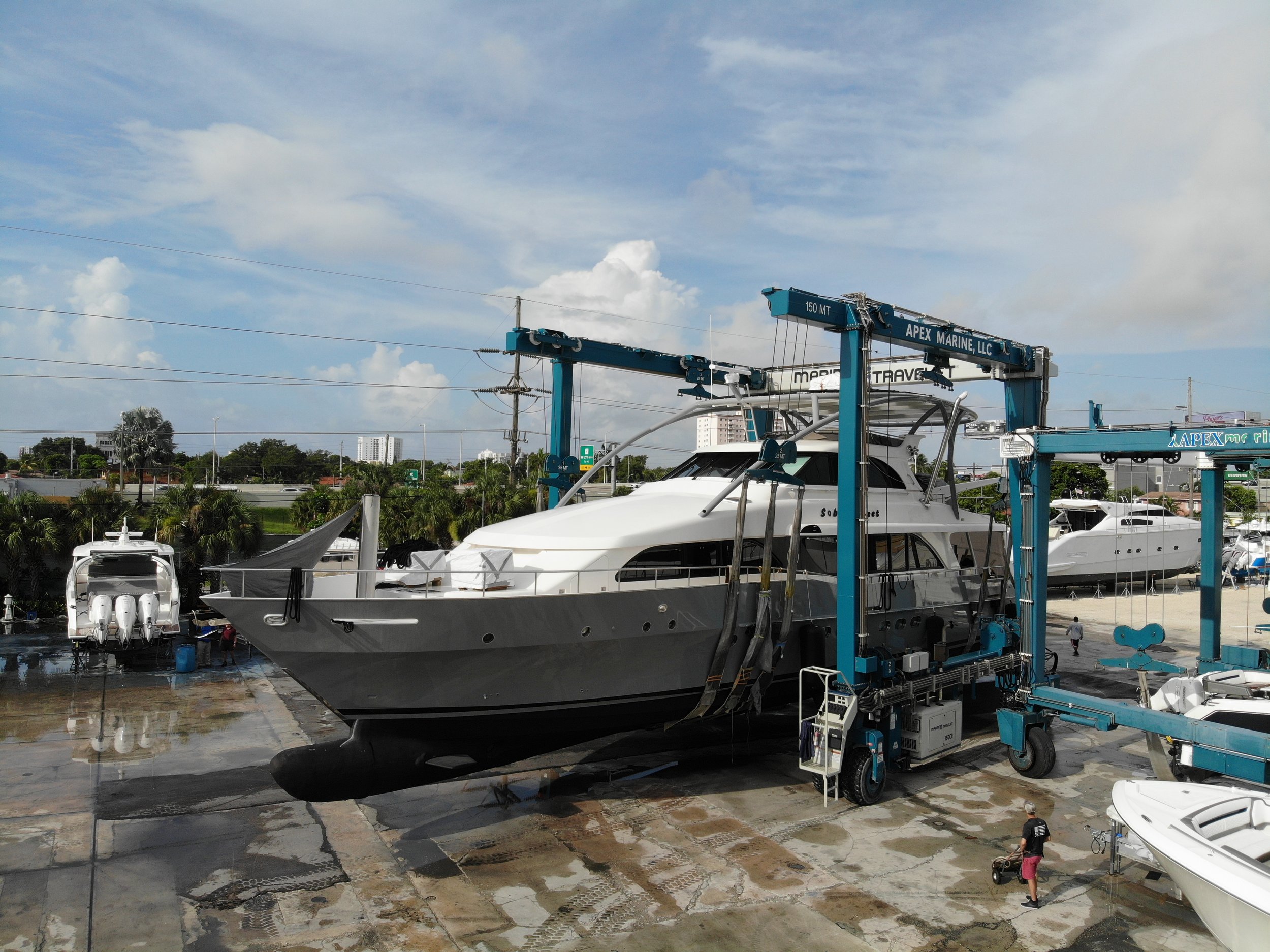
Sobe Sunset
Atlantic Marine Electric’s Prototype Yacht of the Future (100ft)
Featured in…
Sobe Sunset has been featured in the BOAT Design & Innovation and received this year’s Judge’s Commendation for innovations!
Sobe Sunset also appears in the Professional BoatBuilder magazine! This issue delves into the origin story of AME and takes a closer look at the various innovations aboard Sobe Sunset.
Purchased in 2019 as a conventional luxury motor-yacht, Sobe Sunset has been torn down and rebuilt into the ideal subtropical boat, with a comprehensive support system that puts the owner in charge.
With real-time performance data transmitted via satellite and onshore operations overseeing every aspect of its journey, this yacht sets a new standard for life on the water.
Watch this video to take a virtual tour of Sobe Sunset led by Atlantic Marine Electric’s CEO, Cyril Silberman.
Propulsion
The propulsion system of Sobe Sunset is hybrid electric/diesel. When cruising at up to 8 knots, the propulsion -- including forward and reverse operation -- is all electric; when up to 11 knots, one of two diesel engines comes online; and when up to 14 knots both diesels are employed.
Any time a diesel is running, it is also charging the lithium batteries through two generators, which are part of the onboard electric motors attached to the diesels. The lithium batteries are also charged through optional solar collectors and, at anchor, by means of tidal currents.
Sobe Sunset uses lithium-iron-phosphate (LFP) batteries. Although LFP batteries are 10% heavier than those used in automobiles – weight is naturally less of a concern on a boat – they also use different chemistry and are far less likely to catch fire – or in the rare chance they do, they can be quenched with water.
Technical DocumentsControls
Upon choice by the captain, the vessel maintains a pre-set course using satellite positioning, plus live information on weather, wind, and currents, as well as data collection from the engines, propulsion shafts, battery charge, and more.
All of the data is shown on the bridge in an easy-to-read dashboard display as well as in the onshore operations center.
The captain can intervene as he/she wishes, such alterations being fed back to monitoring equipment at the shore base, which sends data and commands back to the vessel. Displays showing exactly what is seen on the bridge are also mounted in various locations around the vessel.
Technical DocumentsManeuvering
Sobe Sunset has no rudders. Nor does it have a traditional wheel or helm. The main problem with rudders is that they are a principal source of drag. They add to drag even when aligned with the keel. In a turn, to some extent they add drag so that the bow is brought to a new heading.
Sobe Sunset has eliminated rudders and induces banking more in line with an aircraft than sea-craft. Sobe Sunset turns are affected by engine thrust differential - where one engine thrusts more than the other. Simultaneously, roll stabilizers move like the ailerons (wing flaps) of an airplane. Together, the engine propulsion differential and stabilizers bank the ship through turns rather than use drag to slip around a turn.
The helm is replaced by a sidestick controller. Underway, the sidestick operates the dual engine propulsion -- in either forward or reverse -- and initiates turns by moving right or left. Sidestick movements activate a computer program that adjust the port and starboard engine propulsion as well as the position of the roll stabilizers. In the harbor, the sidestick also activates high-voltage electrically powered 50hp bow and stern thrusters for tight maneuvering.
Technical DocumentsVessel Stability
The vessel’s roll stabilizers are not just for turns; when the vessel is under way the roll stabilizers steady the ship’s profile to the sea. An electrically actuated pitch wing stabilizer mounted adjacent to the bow bulb works to suppress pitch oscillations, which are the major cause of passenger discomfort and sea sickness.
Technical DocumentsPower & Energy
Sobe Sunset’s hybrid electric propulsion system is the ideal way to efficiently provide for the energy demands of the whole vessel, not just the propellers. Because the main engines can be directly connected to powerful generators, the large batteries can be recharged quickly. Additionally, since all of Sobe Sunset’s electrical power is supplied by the batteries, there is no need for gensets. This dramatically reduces the cost, size, and complexity of the machinery space; and it eliminates the noise and smell of an auxiliary generator running all the time.
The electrical system itself is unique. Instead of using conventional AC power, Sobe Sunset distributes DC power to most of the equipment at a relatively high voltage of 750 volts. This allows for smaller wires, less weight, and more efficient energy use. With this approach, the large lithium-ion battery bank can provide power for the propulsion motors and all the other on-board systems. An inverter system makes 120/240 volts directly from the 750 volts for the few hotel systems that require it. With the solar arrays and high battery charge rate available through using the main engines, ample power is always available.
Dockside, if the sun is not quick enough for a full charge and running the main engines is not desired, shore power can be used to supplement the solar power. To achieve this, shore power is converted to 750 volts DC for distribution around the boat and to the battery chargers. This approach has the added benefit of automatically adapting to either 50Hz or 60Hz shore power; it doesn’t matter which is available.
Technical DocumentsInterested in our technology?
Get in touch with us today to learn more about our innovations and how they can drastically improve your boating experience.




